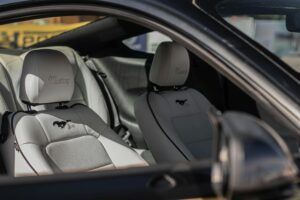I remember the first time I spotted a shiny new truck after surviving just one Utah winter—the paint looked like it’d been through a gravel storm. That’s when it hit me why so many folks here swear by paint protection film, or PPF as we call it. It’s basically this tough, clear shield that takes the hits from all the junk on our roads, keeping your ride looking sharp and holding its value.
Out here, with the mag chloride they dump on icy streets, that brutal high-elevation sun, and construction zones flinging rocks everywhere, nothing’s gentle on your vehicle. Premium PPF usually comes with a 5- to 10-year warranty, but honestly, in Utah’s wild mix of scorching summers over 100°F and freezing winters, you’re lucky if it holds up strong for 4 to 7 years. I’ve seen it firsthand around Salt Lake—thermal swings make the film expand and contract like crazy, wearing it down faster than you’d expect.
So, how do you know when it’s time to swap it out? It sneaks up on you. Yellowing pops up first from all that UV hammering away, turning crystal-clear film kinda amber. Check the edges too—if they’re lifting and you can slide a nail underneath, water and grime are already sneaking in. Cracking or those spider-web patterns mean it’s lost its flex, especially on the bumper or hood where impacts hit hardest. And yeah, our canyon drives and salty slush leave unique marks, like cloudy spots that just won’t budge.
A lot depends on how it’s put on and what you do afterward. Get it done by pros who prep the surface right and cut it precise—that’s the foundation for it lasting. Cheaper films might seem like a deal, but they flake out in 2-3 years under our conditions. Go for top brands like XPEL or 3M with better UV blockers and self-healing tech. Maintenance? That’s huge. Wash weekly in winter to rinse off that corrosive mag chloride before it eats away—use gentle, PPF-friendly soap, and do it in the shade to avoid shocking the material.
In summer, park smart, maybe under cover if you can, and slap on a sealant for extra armor against the heat and rays. After a dusty trail run, give it a quick once-over for chips. I’ve noticed owners who stay on top of this stuff squeeze out way more life from their film.
Waiting too long to replace it? Big mistake. Once it stops protecting, your paint takes the beating, and fixing that costs a fortune—think thousands for repaints versus a couple grand for new PPF. Plus, old film is a pain to remove without messing up what’s underneath. Better to get a pro to check it yearly; they spot subtle issues early and can patch or refresh coatings to buy you time.
When you do replace, think about going bigger—full front or even the whole vehicle if you’re tackling Utah roads daily. Newer films are leagues better now, with insane durability. Keep pics of the install, log your washes and any dings—it all helps with warranties or planning the next round.
Look, treating PPF like regular upkeep, not a set-it-and-forget-it thing, keeps your car battling our mountains, storms, and desert blasts while still turning heads. Replace before it fails, and you’ll save cash and headaches in the long run.
Quick FAQs folks always ask:
- Cost to replace in Utah? Partial front (bumper, half hood, mirrors) runs $800–$1,500; full front or whole car? $2,000–$5,000, more for fancy rides or premium stuff.
- Can you fix just parts? Small scratches often heal themselves on good film. Pros can patch rock dings sometimes, but yellowing or edges peeling means full redo.
- Warranty hold up here? Mostly covers defects, not our salt or sun—check the fine print and keep records.
- Best season for new install? Spring or fall for comfy temps; skip winter cold or summer sizzle unless they’ve got a controlled shop.
- Tips to make it last longer? Winter washes, shade parking, sealants twice a year, fix damage fast, and annual pro check-ups. We’ve found this pushes it toward that 7-year mark pretty reliably.



